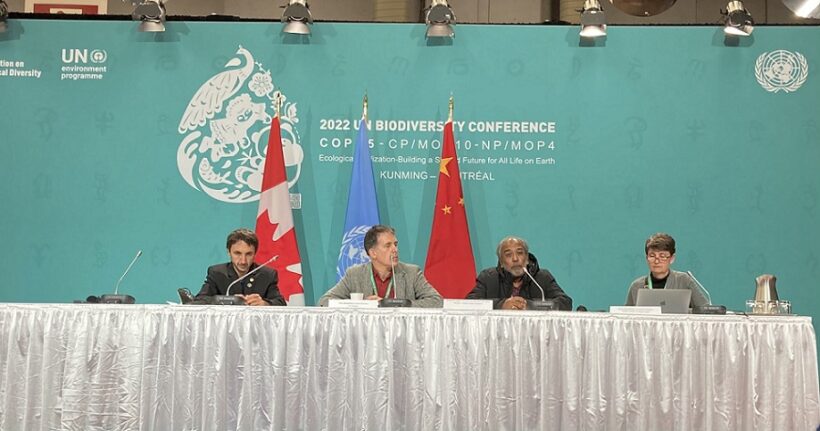So-called “solutions” to the biodiversity and climate crises are being developed, not for the protection of biological diversity, but to ensure the unsustainable continuation of business as usual.
The Global Biodiversity Framework being negotiated at COP 15 includes proposals for so-called Business for Nature or Nature-Positive Business, “30×30” and biotechnology for biodiversity protection. These are being pushed forward as major “solutions” to the biodiversity crisis, even though they have been designed to advance business as usual through the promotion of offsets, land grabs and dangerous new unproven technologies. They are threats to Indigenous peoples, local communities, biodiversity and the climate according to experts from four continents.
“The expansion of so-called ‘protected areas’ and offsets under these concepts of “Nature-positive” or “Nature Based Solutions” have nothing to do with halting biodiversity loss. They are only about paving the way for business and enabling ongoing biodiversity destruction and climate change emission through the promotion of protected areas as biodiversity offsets,” stated Souparna Lahiri of Global Forest Coalition. “If you really want to protect and conserve biodiversity, we must actually halt biodiversity loss.”
The rapid advancement of new, extreme and unproven technologies is leading to renewed calls demanding application of the Precautionary principle–including “horizon scanning” to help identify and reign in risky new and emerging technologies before they are implemented.
“Countries here negotiating the protection of global biodiversity must retain the Precautionary principle on which the CBD was founded. The text agreed here must ensure that society builds participatory mechanisms to scan the horizon for future risky technologies, assess new technologies that are already in development, such as gene drive organisms, and monitor existing technologies for potential harmful impact. The disastrous ecological and human health consequences of the last 20 years of GM crop cultivation are a lesson in what happens when none of these three processes takes place effectively, one highlighted in Kenya last month,” said Tom Wakeford of ETC Group.
Particular concerns revolve around the impacts of new genetic engineering technologies on pollinators.
“The proposed release into wild forests of genetically engineered American chestnut trees designed to spread and contaminate native wild relatives is a real world example of the need for the application of the Precautionary Principle. This would be the first ever release of a GMO plant to replicate in the wild and there have been no risk assessments on the long-term impacts on forest ecosystems, biodiversity, local communities, or on pollinators that eat the genetically engineered tree pollen,” added Anne Petermann of Global Justice Ecology Project.
A summary of points from the Appeal from scientists and policy experts asking world leaders at COP15 to apply Precautionary principle on biotechnologies that may harm insect pollinators: “The release of organisms, products or components obtained through genetic biotechnologies, could amplify the current stressors pollinators are already experiencing. It is not possible to provide robust and reliable risk assessments to ensure that pollinators’ decline will not be further precipitated by the release of these biotechnologies. Therefore, there must be a strict application of the UN Precautionary Principle.”
“In agriculture, genetic biotechnologies are oriented to maintain business as usual: large monocultures that are destroying biodiversity. At COP 15, we should focus on how to redesign working landscapes to conserve and restore biodiversity while producing enough nutritious food. There are many examples from agroecological farms around the world showing that this is feasible,” added Lucas A. Garibaldi, co-Chair of IPBES and co-author of the Appeal.
In 2008 the UN CBD COP in Bonn Germany made a decision regarding GE trees that urged countries to take a Precautionary Approach due to the lack of information regarding the impacts of GE trees on forest biological diversity or on Indigenous peoples and local communities. Despite that, companies and researchers in the US and Brazil are advancing plans to release GE trees on a large scale.










